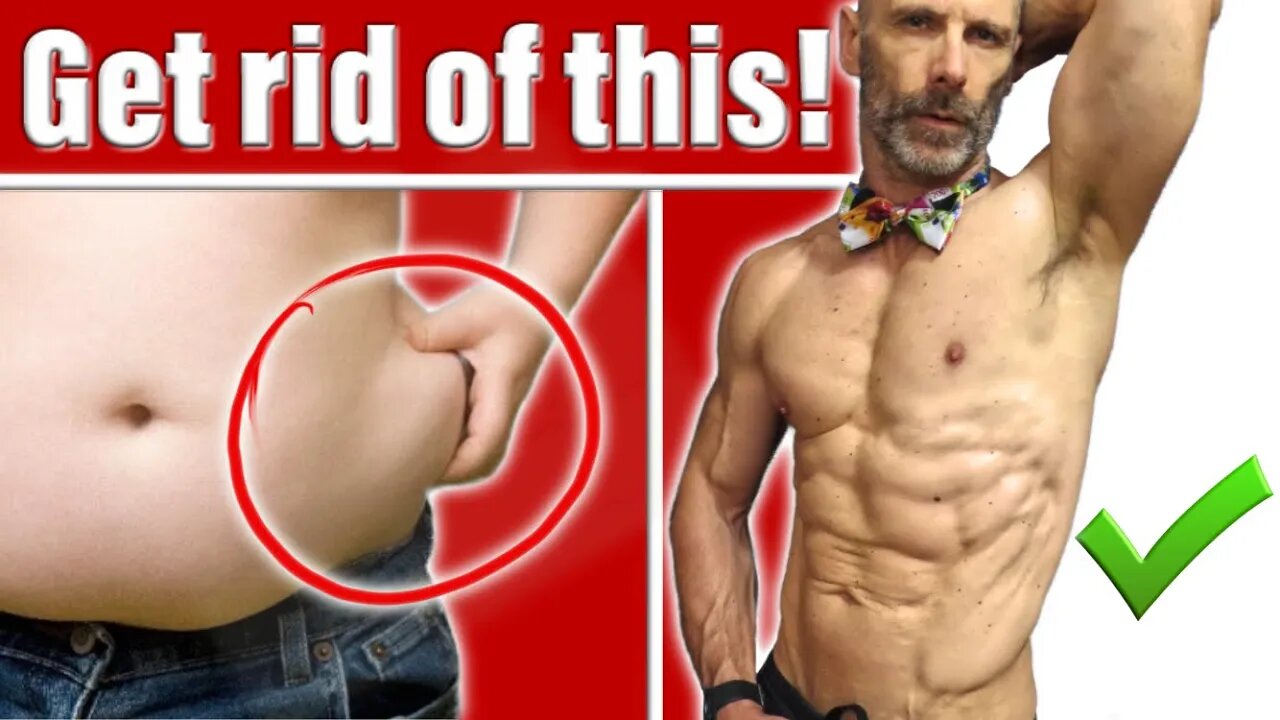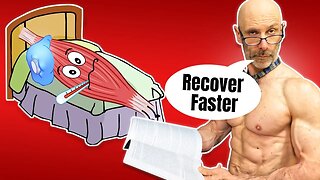Premium Only Content

How To Get Rid Of Love Handles For Men Over 50 (Forever)
How to get rid of love handles for men over 50 (Forever)
It didn’t show up all at once. It was gradual. It might have started when you got married to the love of your life and began to settle down—eating regular meals and getting into a new routine that found you being less active.
But as Tina Turner said, what’s love got to do with it. There is nothing to love about love handles.
Our love handles are one of the first places we start to notice fat accumulating on our bodies, and when losing weight, it’s one of the last places it goes.
We can’t spot reduce fat, so depending on how much weight we have gained, we might have other areas we’ll lose fat off of first. This isn’t a bad thing because a lot of guys over 50 not only have love handles but some belly fat accumulation too.
So today’s a bonus video because to lose those love handles, we’ve got to lose that belly.
If you are interested in losing body fat and adding muscle, please email me at 1shark1bite@gmail.com for information on my personal training services.
If you would like a set of Torrobands for yourself, here is my affiliate link so you can receive 50% off on your purchase https://sale.torroband.com/?affId=555B3E5D
Check your testosterone levels from home. Just click this link http://trylgc.com/laurence and receive 20% off with code: LAURENCE20 I receive commissions on referrals to LetsGetChecked. I only recommend services I know and trust.
My Affiliate link to Lebert for their Equalizer bars and more; https://lebertfitness.com/?ref=FitAnd50 and use the discount code FITAND50 you will receive 20% off your purchase
Facebook; https://www.facebook.com/Fit-and-50-5...
My Amazon page link; https://www.amazon.com/shop/fitand50
The best way to do this is through a combination of diet and exercise. We’ll get into exercise later, but it’s a mix of a couple of different types of exercises.
One of the first things we need to realize is that food quantity and the number of calories consumed aren’t equal. You can have a high-calorie diet and eat very little food.
How many times have you heard someone struggling to lose weight say that they hardly eat anything?
The opposite is also true. You can eat a large amount of food and consume relatively few calories.
So food selection matters. You’ve heard me talk about whole food eating before, but there is another level to it. The way we combine our foods at a meal makes a difference.
Protein helps us feel more satiated or satisfied. So we should have a portion of protein at every meal.
Next up is veggies, and we eat these for more than just the high level of nutrition they provide. They also fill our stomach, which lowers the hunger hormone Ghrelin and increases the satiety hormone leptin.
To keep these hormones in check long after our meal, we add in fats because they slow down digestion keeping us feeling full.
Warning though, fats are very high calorie, and It’s easy to overconsume. So I recommend keeping your portions between two to four thumb sizes.
Complex carbohydrates are not the enemy. The goal should be to eat as unprocessed as possible, with brown rice, oats, beans and potatoes topping my list.
As a matter of fact, potatoes rank the highest on the satiety index, even higher than all the protein-based foods they tested.
That’s the basics of a balanced diet. To know if you have eaten the right amount. Use mindful eating, take your time to enjoy the meal and think about how you feel after you finished.
You should feel satisfied, not full. When you say, “ohhhh, I’m full,” that means you overate and be patient too. Sometimes it can take up to 20 minutes for the stomach to signal the brain it’s had enough.
Now we are going to take a look at training. Don’t waste your time on a bunch of core-focused exercises. I’m not saying don’t train your core, just most of your time should be spent elsewhere.
To see where we should be spending our training time. I looked a 2012 study that compared the effects of aerobic training, resistance training and a combination of the two on overweight and obese people, with the average age of the men being 53.
All three groups trained 30 minutes a day, 5 times per week. The resistance and cardio group did 15 mins of cardio and 15 minutes of weight training each day. Personally, I would’ve alternated the 30 minutes of cardio with 30 minutes of resistance training every other day.
For cardio, they walked at 60% of their heart rate reserve, which is moderate intensity.
After 12 weeks, they found that the combination of cardio and resistance training lost the most fat. Resulting in an inch off their waist.
This was a leg focused workout, including leg press, leg extensions and leg curls.
The final two exercises were bench press and rear delt rows.
-
 4:53
4:53
Fit and 50
1 year ago $0.07 earnedHow to Speed Up Muscle Recovery Over 50 (Recover Like a 20 yr old)
5674 -
 1:04:18
1:04:18
Man in America
15 hours agoHow Rockefeller Hijacked Education to Breed a Class of SLAVES w/ Alex Newman
85.8K96 -
 2:07:09
2:07:09
DLDAfterDark
12 hours ago $6.14 earnedDLD Live! Gun Talk - Welcome To The Armory! Feat. BDG&G Josh & The Okayest Shooter
26.3K6 -
 LIVE
LIVE
Boxin
3 hours agoWe Star South Of Midnight (is it a Woke Joke?!)
751 watching -
 2:40:52
2:40:52
Tundra Tactical
17 hours ago $33.40 earned🛑 What The Hell Happened To Our Gun Rights?? May 2025 Edition
67.9K2 -
 2:26:01
2:26:01
The Connect: With Johnny Mitchell
19 hours ago $6.19 earnedHow A Los Angeles Drug Kingpin Sold 40 TONS OF WEED, Got Life In Prison & Then Pardoned By Trump
39.6K8 -
 25:22
25:22
Forrest Galante
11 hours agoPrivate Tour of Australia’s Best Aquarium
53.1K5 -
 LIVE
LIVE
Midnight In The Mountains
3 hours agoGaming w/ PER·SE·VER·ANCE | Star Wars Battle Front 2 - First Time Playthrough
156 watching -
 LIVE
LIVE
MrR4ger
3 hours agoMIDNIGHT R4GE - STAR WARS BATTLEFRONT 2 *Short cozy stream
40 watching -
 2:07:09
2:07:09
BlackDiamondGunsandGear
16 hours ago🔴 LIVE SHOW w/ DLD & Okayest Shooter
42.1K2